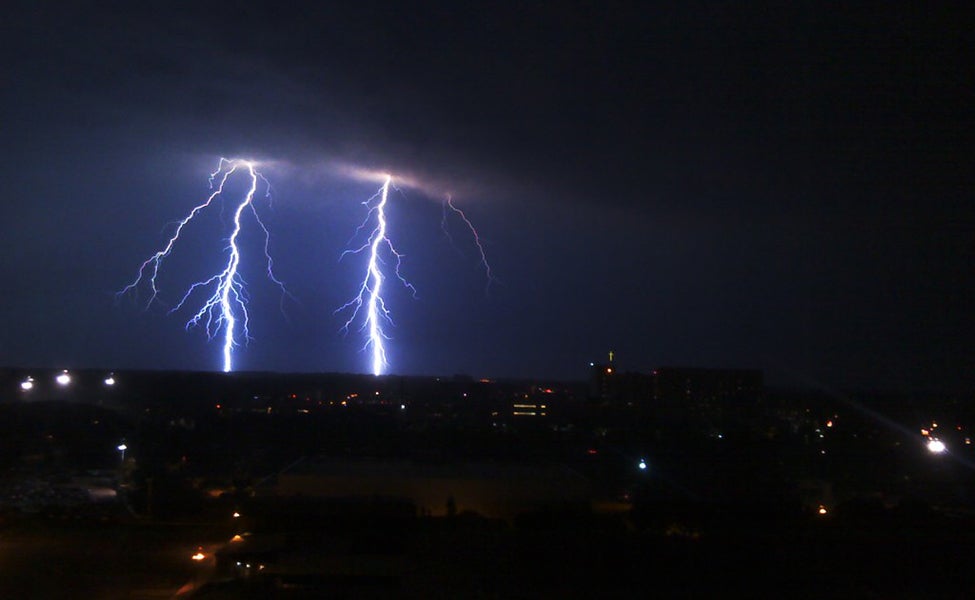Controlling Electrostatic Discharge in the Lab

Electrostatic discharge or static electricity can present a formidable obstacle when approaching the design of laboratory environments. While the need may be traditionally associated with certain laboratory types such as electronics and clean labs, the need for varying levels of control is becoming more relevant in unexpected cases due to the increasing use of robotics and highly sensitive electronic equipment for traditionally bench-top based research. Four different considerations useful in controlling static discharge are presented below, addressing some possible misconceptions. These considerations should not be considered individually but as parts of a system with each playing an important role toward achieving the project static control goals.
Consideration 1 – Relative Humidity
Controlling the relative humidity of a specific environment may be the single best way to control the discharge of electrostatic energy. It is generally agreed that relative humidity should be maintained at levels over 30% RH. These humidity levels do not eliminate the electrostatic charge but hinder it from discharging from one material to another. As humidity levels increase above 60-70%, they may also contribute to corrosion, mildew/mold growth and/or a general discomfort for occupants; a balance needs to be struck and close coordination of the mechanical systems as well as the built environment should be made. Areas with a high level of electrostatic discharge control may require monitoring of relative humidity levels.
Consideration 2 – Flooring
Effective use of ESD flooring or mats is dependent upon providing appropriate connection points between the floor and object being grounded. This is typically dependent on appropriate lab protocol being in place for both use and maintenance. When used as a method for personnel grounding, protocols should typically include conductive footwear, or leg, toe or heel straps; when used for equipment (typically carts) grounding straps should be incorporated to ensure adequate contact of the cart with the conductive floor. Proper installation and maintenance of the ESD flooring, per the manufacturer’s guidelines, is also critical, including low resistance path from the flooring to building ground. Pre-construction coordination and documentation is required.
Consideration 3 – Work Surfaces at Tables and Benches
The laboratory work surface may present some challenges when it comes to addressing ESD requirements. Materials such as epoxy, phenolic resin and wood function as insulating materials, dissipating electrical charge very slowly. These materials provide very little potential for an electrical charge to flow through them from one material to another. In some cases these materials may be required to address other durability requirements. Metal tops (such as stainless steel and copper) or ESD laminates provide low resistance and are conductive. The choice of the work surface material should be determined in accordance to the project goals and reflect the lab needs. Regardless of the selected material, local table mats may also be selected to provide local ESD protection. Local table mats are typically paired with local floor mats and wrist straps (when provided as a system, these elements should share a common ground point).
Consideration 4 – Casework Grounding
Similar to the considerations discussed for work surfaces, wood casework functions as an insulator and metal casework is conductive. Coordination of the casework with the selected work surface and associated use of table/floor mats and/or wrist straps requires careful coordination of contact point and discharge methodology.
References
(JPL), J. P. (2005). JPL Standard for Electrostatic Discharge (ESD) Control. D-1348 rev. F, Standard: Electrostatic Discharge Control.
EOS/ESD Association, I. (2014, June 11). ANSI/ESD S20.20-2014. Protection of electrical and electornic parts assemblies and equipment (Excluding electrically initiated explosive devices). Rome, New York, USA.
Standard, N. T. (1997, December). NASA-STD-8739.7; (Cancelled). Electrostatic discharge control (Excluding electrically initiated explosive devices).
This article is written by Fred P. Mason, Jr., RA, LEED AP, Senior Laboratory Planner, and originally appeared in Lab Design News.
